It has been estimated that as many as 11,000 women served in Vietnam or in other locations, but over 90% served as nurses. Women Of The Vietnam War served as nurses in evacuation hospitals, MASH units and aboard hospital ships. Others worked in support roles in military information offices, headquarters, service clubs, and various other clerical, medical, and personnel positions. Servicewomen in Vietnam experienced many of the same hardships as their male counterparts and served bravely in dangerous situations. Many were awarded personal citations.

Non-military women also served important roles. They provided entertainment and support to the troops through the USO, the American Red Cross, and other humanitarian organizations. Women working as civilian nurses for USAID (US Agency for International Development) participated in one of the most famous humanitarian operations of the war, Operation Babylift, which brought thousands of Vietnamese orphans to the U.S. for adoption. Additionally, many women reported the war for news and media agencies.
Women Of The Vietnam War: Combat Nurses
Combat nurses worked twelve-hour shifts six days a week and when a mass casualty incident occurred, like a major battle, those twelve-hour shifts could easily turn into twenty-four to thirty-six hour shifts. Nurses also volunteered their time in the communities around them, often going to the local orphanages or hospitals to offer the civilians their medical services or to teach classes on basic hygiene, first aid or even English. Nurses also had to deal with numerous emotions: stress from the amount of patients they had to serve, anger at seeing young men so horribly wounded and guilt at not being able to save all of the wounded men or make them whole again.

Despite the long hours and sometimes horrifying wounds these women had to face, many nurses found their service rewarding. They were able to serve their country and save and comfort the wounded men in their facilities. During the Vietnam War 98% of the men who were wounded and made it to the hospital survived. Nurses witnessed some truly miraculous events such as men recovering from their wounds or acts of true selflessness that are common during combat situations, and many nurses made close friends with their fellow co-workers some of whom still keep in contact into the present day.
Eight U.S. of these heroic nurses died in Vietnam; six were killed, two died of illnesses. Each dedicated themselves to taking care of the wounded and dying.
See their faces and remember their names. These are their stories.
Women’s Stories Of The Vietnam War
Lieutenant Colonel Annie Ruth Graham, Chief Nurse at 91st Evacuation Hospital in Tuy Hoa. A native of Efland N.C., she suffered a stroke in August 1968 and was evacuated to Japan where she died four days later. She was a veteran of both WWII and Korea. She was 52.
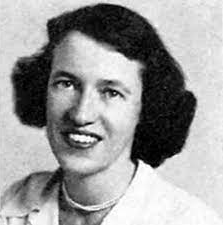
View her shadow box on TogetherWeServed.
First Lieutenant Sharon Anne Lane died from shrapnel wounds when the 312th Evacuation Hospital at Chu Lai was hit by rockets on June 8, 1969. From Canton, OH, she was a month short of her 26th birthday.

She was posthumously awarded the Vietnamese Gallantry Cross with Palm and the Bronze Star for Heroism. In 1970, the recovery room at Fitzsimmons Army Hospital in Denver, where Lt. Lane had been assigned before going to Vietnam, was dedicated in her honor. She was 26 years old.
In 1973, Aultman Hospital in Canton, OH, where Lane had attended nursing school, erected a bronze statue of Lane. The names of 110 local servicemen killed in Vietnam are on the base of the statue.
View here service shadow box on TogetherWeServed.
2nd Lt. Carol Ann Elizabeth Drazba (L) of Dunmore, Pennsylvania, and 2nd Lt. Elizabeth Ann Jones of Allendale, South Carolina. Both were the first military women killed in the Vietnam War. Both were assigned to the 3rd Field Hospital in Saigon. On February 18, 1966, they were on an administrative flight to Dalat aboard a helicopter from the 197th Assault Helicopter Company, 145th Combat Aviation Battalion, when the aircraft struck a high-tension transmission line over a river in the vicinity of Bien Hoa. They died along with five other passengers in a helicopter crash including Jones’ fiance. Both were 22 years old.

They are honored on Panel 5E, Row 46 and Panel 5E, Row 47 of the Vietnam Veterans Memorial.
View 2nd Lt.Carol Ann Elizabeth Drazba and 2nd Lt Elizabeth Ann Jones‘s shadow boxes on TogetherWeServed.
Capt. Eleanor Grace Alexander (L) from Westwood, New Jersey, and Lt. Hedwig Diane Orlowski of Detroit, Michigan died on November 30, 1967, when a U.S. Air Force C-7B hit a mountain about 5 miles south of Qui Nhon. The presence of low clouds and rain had reduced visibility to about two miles. It took search and rescue teams five days to locate the crash site in the dense jungle. Twenty-six people were killed in the crash. Four crewmen were lost, two Air Force passengers and 18 U.S. Army personnel, including two U.S. civilians, were also killed in the accident. With them when their plane crashed on the return trip to Qui Nhon were two other nurses, Jerome E. Olmstead of Clintonville, WI, and Kenneth R. Shoemaker, Jr. of Owensboro, KY.

To help in a rush of wounded, both were assigned to temporary duty in Pleiku. Alexander’s regular duty was at the 85th Evacuation Hospital and Orlowski was at the 67th Evacuation Hospital in Qui Nhon. Alexander was 27; Orlowski was 23. Both were awarded the Bronze Star and Purple Heart.
View Capt. Eleanor Grace Alexander and Lt. Hedwig Diane Orlowski‘s shadow boxes on Together We Served.
They are honored on Panel 31E, Row 15 of the Vietnam Veterans Memorial.
Second Lieutenant Pamela Dorothy Donovan, from Allston, MA, became seriously ill and died on July 8, 1968, in Gia Dinh Province, South Vietnam, at the age of 26. She was assigned to the 85th Evacuation Hospital in Qui Nhon. She was born in Wirral, Merseyside (in England), UK, March 25, 1942, to Irish parents. The family returned to Dublin, Ireland; and Pam was raised and educated there before the family came to Brighton, Massachusetts.
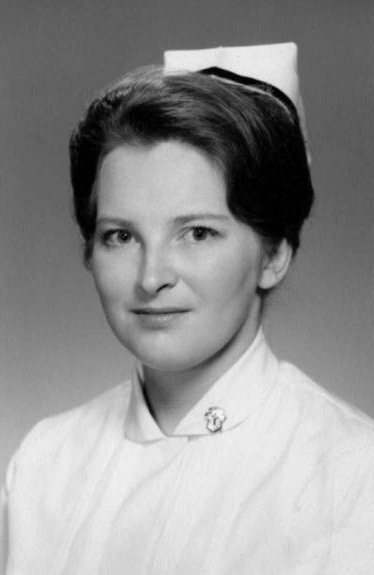
View her service profile on TogetherWeServed.
Capt. Mary Therese Klinker, U.S. Air Force was from Lafayette, Indiana. On April 3, 1975, Klinker was aboard a U.S. Air Force C-5A leaving Saigon and bound for Clark Air Base in the Philippines. She was a part of the initial mission in “Operation Babylift“. The C-5 troop compartment carried 145 Vietnamese orphans and seven attendants’ en route to the United States.

The cargo compartment held 102 orphans and 47 others. Twelve minutes after takeoff, the rear loading ramp’s locks failed, leading to explosive decompression and massive structural damage. The C-5 touched down in a rice paddy, skidded about 1,000 feet before becoming airborne again, hit a dike, and broke into four parts. The cargo compartment was completely destroyed, killing 141 of the 149 orphans and attendants. Klinker was posthumously awarded the Airman’s Medal for Heroism and the Meritorious Service Medal. She was 27 years old.
View her shadow box on TogetherWeServed.
These eight women embody selfless love, sacrifice, and courage. They are American heroes who volunteered to serve their country.
A grateful country remembers.
Women Of The Vietnam War: American Red Cross

In 1966, the American Red Cross expanded its Supplemental Recreation Activities Overseas (SRAO), a program that provided recreational activities to servicemen posted too far from USOs and other military entertainment facilities. The Red Cross recruited female college graduates between the ages of 21 and 26 to participate in these “Clubmobiles.” Soldiers referred to these young women as ‘Donut Dollies,’ a reference to the Red Cross Donut canteens of World War II.
Donut Dollies often brought along candy, decks of cards, paperback books, mirrors, combs, stationery and other items to distribute to the soldiers. They also set up and staffed more permanent Red Cross recreation centers for troops, which offered coffee, Kool-Aid, games, reading libraries, music, and other activities.
The young women serving with the Red Cross provided a valuable respite for soldiers and played an important role in maintaining the morale of the troops.
Virginia E. (Ginny) Kirsch was born on December 2, 1948, in Erie, PA. Ginny graduated from Brookfield High School in 1966 and from Miami University of Ohio in 1970. In July of 1970, Ginny attended Red Cross training and arrived in Vietnam about two weeks later. She was assigned to the American Red Cross at Cu Chi.

At approximately 3:50 am, August 16, 1970, a man was seen running from the back door of Kirsch’s room. She entered Kirsch’s room and observed Kirsch on the floor with stab wounds to the throat, left side, left arm, and left finger. Kirsch was transported to the 25th Medical Battalion Dispensary and was pronounced dead from the stab wounds. She was not sexually molested.
Ginny was the first Red Cross worker to have been murdered in the 17-year history of overseas service.
Hannah E. Crews died in a jeep accident, Bien Hoa, October 2, 1969.
Lucinda J. Richter died of Guillain-Barre syndrome, Cam Ranh Bay, February 9, 1971.
Women Of The Vietnam War: Army Special Services
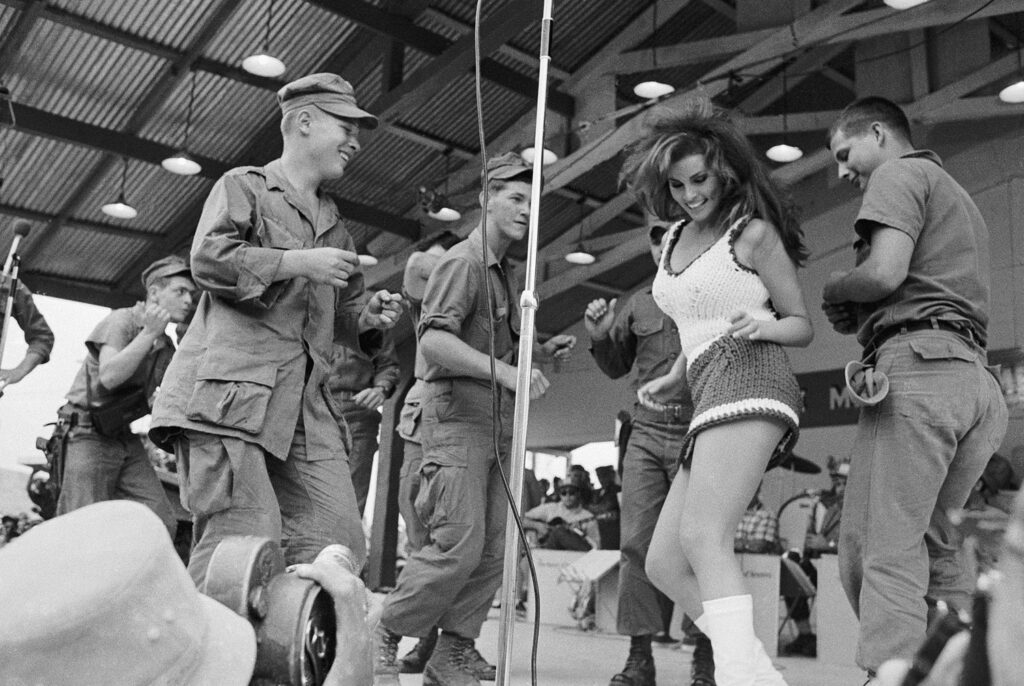
The Army Special Services Program in Vietnam began on July 1, 1966. In pursuit of their mission, the women who served as Special Services librarians and recreation specialists worked long hours in monsoon mud and dusty heat. Because there was far fewer personnel than there were installations requiring their services, they travelled extensively by any available means: jeeps, 2 1/2 ton trucks, helicopters, fixed-wing aircraft, and on foot. They endured rocket attacks, mortar barrages, and commando raids mounted against the installations.
They managed permanent libraries, similar to small public libraries in the United States; they directed a variety of recreational programs and activities, from ping pong tournaments to songfests, running them from service clubs; and they coordinated USO tours of entertainers and celebrities, and produced, directed, and acted in little theatre productions at larger base camps.
Rosalyn Muskat died in a jeep accident, Long Binh, 1968.
Dorothy Phillips died in a plane crash, Qui Nhon, 1967.
Central Intelligence Agency
Barbara Robbins was an American secretary employed by the Central Intelligence Agency. She was killed when a bomb exploded in front of the American Embassy, Saigon, on March 30, 1965. Before the explosion, there was a confrontation between the driver and a policeman and Robbins went to the window of her second-story office to see what was happening; she was killed instantly.
She was the first female employee to be killed in action in the CIA’s history, the first American woman killed in the Vietnam War and, as of 2012, and the youngest CIA employee to die in action.
Betty Gebhardt died in Saigon, Feb. 9, 1971.
United States Agency for International Development
Marilyn L. Allen was from Albany, NY. She was a civilian nurse working with the United States Agency for International Development. She was murdered in Nha Trang on August 16, 1967 by a U.S. soldier who then committed suicide.
Dr. Mary Breen Ratterman was born on Jun. 26, 1926 in Los Angeles County. She was in Saigon working with the American Medical Association. She died from a brainstem injury resulting from a fall from an apartment balcony in Saigon, October 2, 1969. She was not married.
United States Department of the Navy
Regina “Reggie” Williams died of a heart attack in Saigon, 1964.
Journalists
Georgette “Dickey” Chapelle was killed by a mine on patrol with Marines outside Chu Lai, November 4, 1965.
Philippa Schuyler was killed in a helicopter crash into the ocean near Da Nang, May 9, 1967.
Missionaries
Rev. Archie Mitchell, Dr. Eleanor Ardel Vietti, and Daniel Gerber were taken prisoner in 1962 at the leprosarium in Ban Me Thuot.

It was about 7:45 p.m. when approximately twelve armed men appeared on the compound. Dividing into three groups, one accosted Dan Gerber and tied him up.
Another band went directly to the house of Rev. Archie Mitchell, the administrator. Ordering him out of the house, they tied him up and led him away to join Dan Gerber. The third group crossed over to Dr. Vietti’s house and ordered her to the location just outside the compound where Mitchell and Gerber were being held.
About ten that evening they departed in one of the hospital vehicles. Not a shot had been fired. Nor had they attempted to molest any of the Vietnamese or the four missionary nurses on the compound. But their orders were explicit to Mrs. Mitchell and the nurses: they must leave the Leprosarium the following day and not return.
The missionaries who had been left behind informed the authorities in Ban Me Thuot. The next morning U.S. military advisers joined the South Vietnamese soldiers in a search-and-rescue operation. When they got within sight of the abductors and saw they had been heavily reinforced, the American commander reluctantly decided not to attack. He notified Alliance headquarters in Saigon that a rescue attempt would only bring heavy loss of life. Optimism for their early return waned as months went by with little information.
During the years following the abductions, fierce battles were fought in the area. Still, tribesmen coming in from the jungle brought encouraging stories. One Montagnard said he had seen the three captives alive in a mobile VC prison camp. A woman told of seeing two white men and a white woman with a group of VC; the white woman had asked for a Bible. In 1967, Allied soldiers overran a VC jungle hospital and found prescriptions which they claimed only an American doctor could have written.
As late as 1969 negotiations were still underway to get these three people back from the VC. They continue to be listed as POW-MIA.
Janie A. Makil was shot in an ambush while in the arms of her father, who was also killed, at Dalat, March 4, 1963. Janie was 5 months old. Her twin sister, an older sister, an older brother (who was also wounded), and mother survived the ambush.
Carolyn Griswald, Ruth Thompson and Ruth Wilting were killed in a raid on leprosarium in Ban Me Thuot during Tet, February 1, 1968.
Betty Ann Olsen was born to missionary parents in Bouake, Ivory Coast. She had attended a religious school and missionary college in Nyack, New York. Curious about the way the other part of the world lived, she went to Vietnam in 1964 as a missionary nurse for Christian and Missionary Alliance and was assigned to the Leprosarium at Ban Me Thuot, South Vietnam. This center treated anyone with a need as well as those suffering from leprosy.
Betty was captured along with Henry Blood during a raid on a leprosarium in Ban Me Thuot during Tet, Feb. 1, 1968. For months the two and Michael Benge captured a few miles from the hospital, were chained together and moved north from one encampment to another, over 200 miles through the mountainous jungles. The trip was grueling and took its toll on the prisoners. They were physically depleted, sick from dysentery and malnutrition; beset by fungus, infection, leeches and ulcerated sores.
Hank Blood weakened steadily and eventually died of pneumonia. He was buried along the trail by Olsen and Benge. Betty Ann Olsen died September 29, 1968, and was buried by Michael Benge along the Ho Chi Minh Trail. Mike Benge survived and was released from Hanoi in 1973 during Operation Homecoming. Betty’s remains have not been recovered.
In the late hours of Saturday, October 27, 1972, a small group of North Vietnamese soldiers (NVA) invaded the southern Laotian town of Kengkok where Missions of Many Lands maintained a missionary hospital facility. The communists took Beatrice Kosin and Evelyn Anderson prisoners along with Samuel Mattix and Lloyd Oppel, a Canadian citizen, to a nearby village located in a small clearing surrounded by dense jungle. The men were taken north but the women were tied together.
On November 2, 1972, a radio message from Hanoi was intercepted by U.S. intelligence that ordered the execution of Evelyn Anderson and Beatrice Kosin. Later a captured NVA soldier, who was present during this entire incident, told U.S. military intelligence that after the women were captured; they were placed back to back with their wrists tied with wire around the center post of a hut. He also stated the women remained in that position for five days
Immediately after receiving the order to execute the two nurses, the communists simply set fire to the house where they were being held and burned them alive. Further, the NVA torched some 200 other huts thereby destroying the whole village. Reportedly, a later search of the smoldering ruins revealed the corpse of Miss Anderson with her wrist severed, indicating the struggle she made to free herself. There was no report of the condition of Beatrice Kosin’s remains.
Gloria Anne Redlin was a nurse for Lutheran World Relief. Little information is written about the death of Redlin and her companion 1st Sergeant Louis Emil Janca but what is known the pair were returning by moped to Dr. Pat Smith’s hospital in Kontum City late at night on October 13, 1970. On the way, they tried to run an ARVN roadblock, not knowing if it was friendly. Sergeant Janca was killed and Gloria Redlin was seriously wounded. She died of her wounds on October 21, 1970.
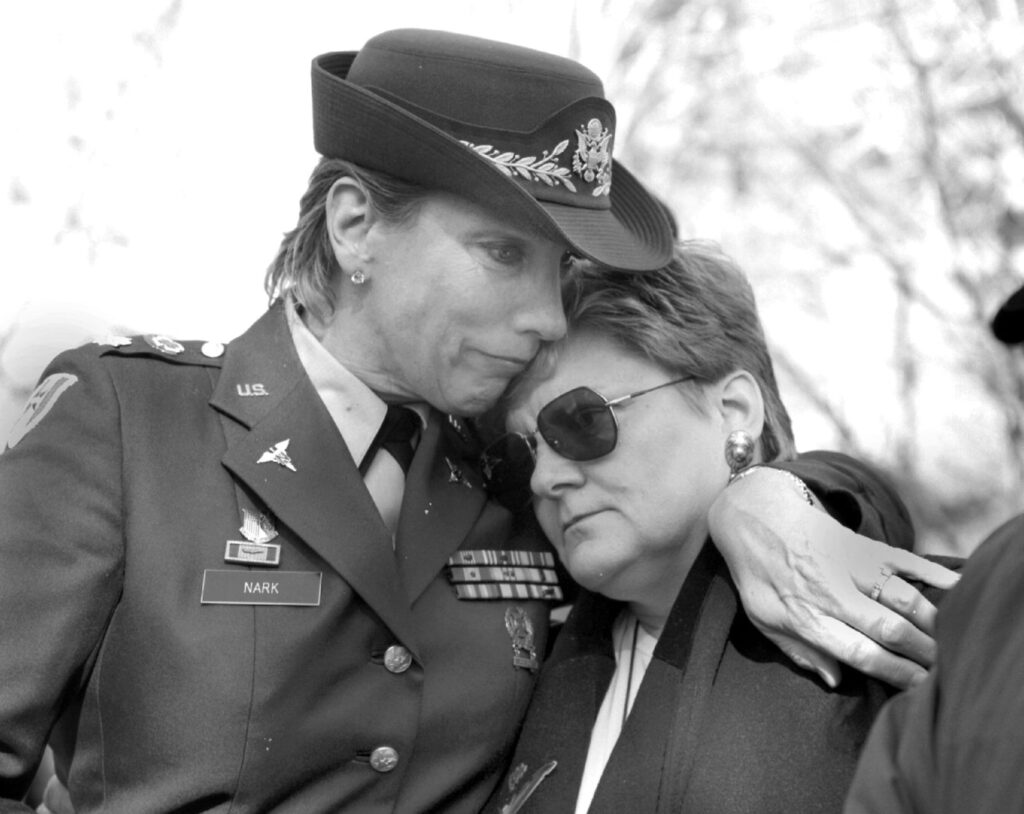
According to a collection of official records, the number of American civilian women thought to have died were 67. Fifty-nine were civilians, including 37 women volunteers who died when a plane carrying them and Vietnamese orphans crashed on takeoff during Operation Babylift. Eight were military nurses.
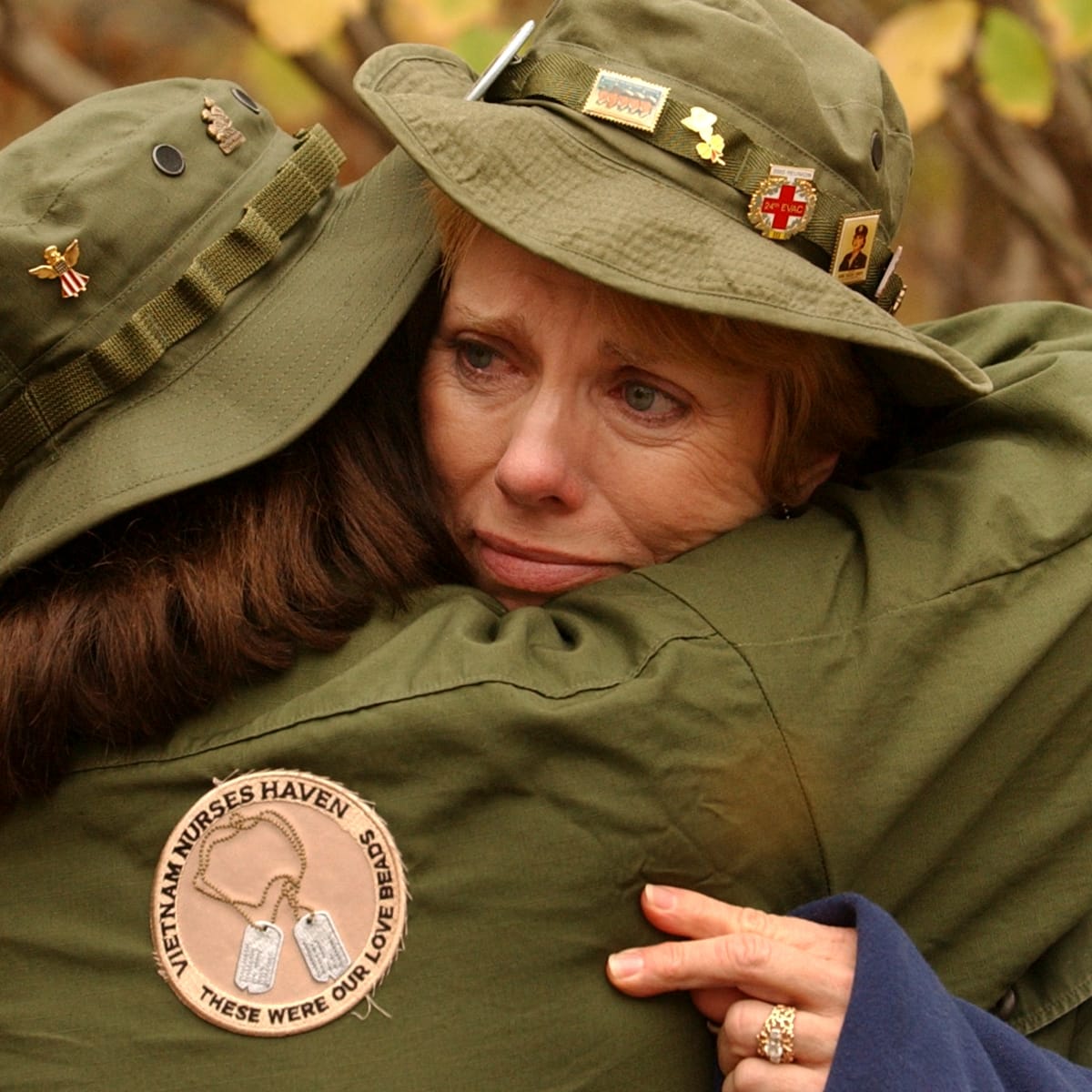
Brave, selfless & dedicated to humanity. God Bless them all.
I hate to be the curmudgeon on this page, but not all of the nurses in Vietnam and points heading west were wonderful people. I was one of the quarter million wounded in Vietnam and my experience was mixed, to say the least. If it was a Navy nurse, she would point at the bands on her cap and say, I’m an officer and your will refer to me as “Ma’am” to make the very clear point that we enlisted swine were beneath contempt. They used hold reveille for us 30-to-a-ward casualties by yanking off our blankets and treating us to Corpsman training as they used both our arms to instruct them in how to draw blood/start an IV. We ended up looking like heroin addicts with a bad aim and when we complained, they’d say “ooh, big tough Marines aren’t afraid of bullets, but they’re scared of itty-bitty needles”.
The Air Force nurses were much worse. When I was being transported in a medical evacuation configured C-130, I had the bottom stretcher. It was so low to the floor that anyone who wanted to see me had to get on their hands and knees. All anyone could see of me was my right arm, and I would wave it energetically if I needed a pain med or a piss pot. The nurse at the front of the plane never bothered to try to talk to me – I just saw a pair of fat ankles as she injected another dose of Demerol into my IV. I was very lucky not to pee in my cast on that 12 -hour flight!
From what I heard, officers received much more enthusiastic care – but for us bottom-of-the barrel types, not so much.
Honestly, I’m grateful that we had young women who volunteered to support us, but I am a touch skeptical when we are expected to get all teary-eyed about the somewhat indifferent commitment of the ladies I ran into.